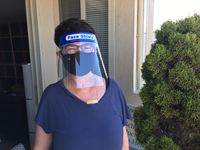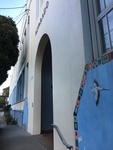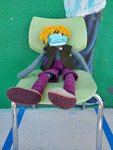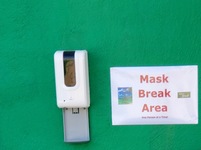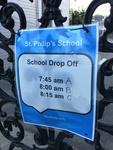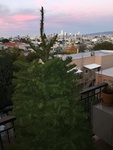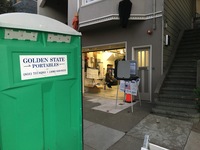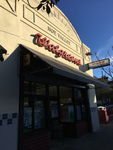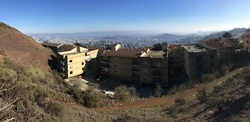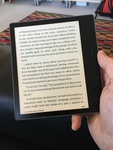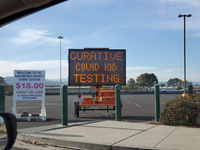 |
| Angelika/Mike Schilli |
|
Angelika While most students at public schools in San Francisco and the surrounding area have been struggling with distance learning since March, private schools here have reopened their doors. Education policy in the USA takes place at the local level, so it is entirely possible that the state of California allows school openings despite the pandemic, but the individual counties still resist.
Despite low infection numbers in September and October, nothing changed for public schools in San Francisco. The school where I work is not in San Francisco but in neighboring San Mateo. However, in San Mateo, only private schools have returned to in-person instruction so far. Why can private schools now welcome students back on campus, but public schools cannot?
Private schools generally have more money and better facilities since they are funded by tuition fees rather than state funds. They often operate more flexibly because they are usually single schools and not part of larger school districts that local school authorities have to manage. The staff are not unionized, so employment contracts do not need to be negotiated with teachers' unions. Surprisingly, the teachers' union is very influential in the USA, even though unions, except in some key industries, do not play a major role. In the context of school reopenings, the unions naturally want to be involved to represent their members, the teachers. There are many points of contention: What is considered safe? Who provides the protective masks? Which age groups return to school first? What happens to teachers who belong to a high-risk group?
In private schools, things are often handled in a less bureaucratic manner. For example, we received $50 per staff member to buy protective masks. The children bring their own masks. There are emergency supplies of masks paid for by the school. Other protective measures were also funded from the school's budget, which did not have to go through any committees first.
You can see, my school (Rundbrief 12/2018) has been open again since September. We applied for a special permit from the state of California, which our Governor Newsom primarily allowed for elementary schools in the summer. We had to develop a safety plan that covered the pandemic requirements of the local and American health authorities (Center for Disease Control, CDC). Our administration initially submitted this plan to the local health authority in San Mateo, which reviewed it and then forwarded it to the California Department of Public Health. At the end of August, we received approval to reopen.
However, the devastating wildfires intervened. The poor air quality forced the school to its knees again, and we had to postpone the opening once more. But by mid-September, it finally happened. After endless, exhausting months of distance learning, we saw our students not on a screen but sitting in the classroom again. Since we are a very small school with very few students in each class, we were able to meet the requirements well. Each student has their own desk surrounded by plexiglass. My desk, which I hardly sit at when the children are there, and my colleague's desk are also shielded with plexiglass. I always feel like I'm at a bank's cash dispenser.
The students' desks are all at least 2 meters apart. The air is filtered by a specially purchased super filter. Each student has their own materials as much as possible. Otherwise, we disinfect. All students (and, of course, staff), no matter how old, wear masks always and everywhere: in the classroom, on the playground, in the restroom. The children are usually only allowed to take off their masks for eating or drinking, and only outside at designated tables where social distancing can be maintained. The spots are marked with green and red circles so that the students know where they can sit to eat.
Outside, in front of each classroom, there is also a designated area where students can take a mask break. They are allowed to sit on a chair and remove their mask there. The start and end times of the school day are staggered for each class, as are the breaks, so our students do not come into contact with students from other classes. Every morning, fever is measured, and a questionnaire with COVID-19 symptoms is checked before the children enter the school grounds. We all have rough hands from so much hand washing. Whenever the children enter or leave the classroom, such as before and after recess, they have to wash their hands. Fortunately, we have a large sink right at the entrance. If a child shows any COVID-19 symptoms, such as a runny nose, they are not allowed to come to school until a negative COVID test is presented. All staff members must take a COVID test at least every four weeks if there are no symptoms. If symptoms are present, they must stay home and get tested immediately.
The whole situation certainly sounds terribly regulated. I admit that I had major concerns about whether my students could handle all the rules, as I work with children who are not that easy to manage. But the children proved me wrong. No one complains about wearing masks or constant hand washing. The children were all so happy to be allowed back to school that they accepted all the regulations. Nothing is worse for them than sitting isolated in front of the computer, even for a generation that loves video games.
Somehow, it also comforts me that personal contact is so highly valued by them. In my opinion, the effects of isolating children during COVID are being completely downplayed. So far, despite the enormously rising numbers across the country, we have managed quite well through the crisis at our school. After the winter break, we will do at least one week of distance learning again because we can't really control what the individual students and staff do during the holidays. Do they adhere to the regulations or contact restrictions? During the first week of distance learning, everyone must get tested, and no one is allowed back to school without a negative test. Despite the renewed lockdown in San Francisco and the surrounding area, schools that are already open are allowed to remain open.
